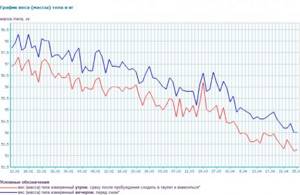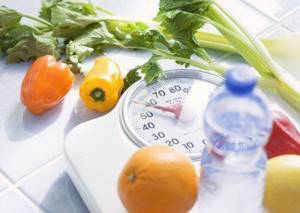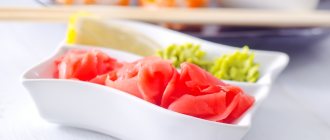Many people are greedy for quick weight loss methods, and yet people are not difficult to understand. After all, you often want to get results faster and enjoy the fruits of your own efforts. At the same time, diets as such are quite harmful and are often fraught with a return to the previous weight and other negative effects.
Therefore, in fact, people who do not want quick effects, but want to lose weight measuredly and quite slowly, are in many ways reasonable.
You can't call them those who don't want to put in the effort. In fact, it is not quick and, let’s say, thoughtful weight loss that is the most optimal option.
Ways to overcome the plateau effect
Before planning dietary changes or increasing exercise, evaluate your behavior now.
It happens that, having experienced the joy of rapid weight loss in the first weeks of diet, we begin to relax a little - exceed the permissible amount of calories per day, and skimp on training. If this is your case, return to strict diet rules. But if you are a conscientious loser, follow the tips below.
1. You can reduce the calorie content of your daily diet, but no more than 200 kcal
. Going below 1200 kcal per day is harmful and makes no sense.
2. Increase physical activity – training time, weight of sports equipment. Changing your fitness program often helps. Include breathing exercises
(bodyflex, oxysize, etc.), you can do all these exercises at home. Half-hour cardio exercises also help restore weight loss, the main condition is daily.
Water ensures rapid overcoming of the plateau effect
. Eight glasses a day may be enough. Water should be drunk separately from the main meal. At the same time, try to minimize your salt intake - it retains excess fluid.
4. When on a low-calorie diet, have “loading” days
– they help the body remember the fast pace of metabolism. The permissible number of such days is three per week. During the “loading” day, do not change the diet menu, but increase the size of portions (within reason).
5. Regular meals
throughout the day also helps restore metabolism. Eat five or six times a day, but eat only the amount prescribed by the diet per day.
6. Get enough sleep.
Many people have noticed that it is difficult to fall asleep during a diet due to hunger. But you need to understand that you shouldn’t expect a good result from such a stressful situation. Think about vitamin-mineral complexes and herbal teas - they will strengthen and soothe your hungry body.
7. Your weight loss will continue if the menu contains the following products:
low-fat yogurt and kefir, oatmeal, eggs, chicken or turkey, greens, broccoli, grapefruit, green tea.
a special diet based on the above products.
. If her menu in terms of calorie content and food selection does not contradict the current diet, then be sure to use it.
Half an hour before breakfast, drink one or two glasses of water. For breakfast you can eat oatmeal or a boiled egg, and drink green tea. For lunch - an apple and water.
Half an hour before lunch – one or two glasses of water. For lunch - a light vegetable salad, soup, natural juice. The afternoon snack should be limited to grapefruit and water.
Before dinner - one or two glasses of water. For dinner - vegetables and lean meat or fish. In the evening - a glass of kefir.
Weekly ration of the Horvath diet
Day 1
Breakfast: soft-boiled egg; black tea or coffee; cracker. Snack: half an apple. Lunch: boiled lean beef (120-130 g); 100 g boiled potatoes; up to 200 g of non-starchy vegetable salad; coffee Tea. Afternoon snack: fruit (100 g); tea. Dinner: lean ham (80 g), boiled or fried in a pan; boiled egg; tomato or cucumber; a glass of juice.
Day 2
Breakfast: tea with crackers. Snack: 200 g of raw or boiled carrots. Lunch: 50 g stewed beef fillet; melon (up to 150 g); 100 g boiled or baked potatoes. Afternoon snack: coffee/tea with 100 ml low-fat milk. Dinner: 150 g baked fish fillet and the same amount of spinach.
Day 3
Breakfast: lean ham (30 g); small cracker; tea. Snack: grapefruit weighing up to 150 g. Lunch: boiled or baked potatoes (200 g); 150 g of lean meat, stewed in the company of carrots. Afternoon snack: tomato juice (200-250 ml). Dinner: 100 g of potatoes, baked with 50 g of cottage cheese.
Day 4
Breakfast: bread with a few slices of cheese; Tea coffee. Snack: medium-sized orange. Lunch: 150 g boiled chicken fillet; 100 g baked or boiled potatoes; a couple of cucumbers (can be with herbs). Afternoon snack: apple. Dinner: omelet (use two chicken eggs, lean ham or lean meat (30 g)); tomato; freshly squeezed juice from fruits or vegetables (glass).
Day 5
Breakfast: 100 g cottage cheese; bread and tea. Snack: 100 g of berries or any small fruit. Lunch: boiled meat (140-150 g); 100 g potatoes (cook in any way without oil); a glass of fruit compote. Afternoon snack: kefir (250 ml). Dinner: salad of several non-starchy vegetables with herbs; a glass of juice.
Day 6
Breakfast: a couple of pieces of watermelon or an apple. Snack: carrot salad weighing up to 200 g. Lunch: 100 g of boiled beef and potatoes; shredded white cabbage (50 g). Afternoon snack: radish (50 g). Dinner: 100 g stewed mushrooms; boiled egg; cucumber.
Day 7
Breakfast: crackers spread with cottage cheese; Tea coffee. Snack: a glass of milk. Lunch: 150 g pork (fry in a dry frying pan); 100 g baked potatoes; tomato or cucumber. Afternoon snack: coffee or tea (you can add 100 ml of milk); 200 g beans, stewed or boiled. Dinner: a glass of kefir and a couple of lean cookies.
Questions and answers why weight increases after exercise
1. I started exercising regularly to lose weight, but after 3 weeks the weight did not decrease at all. Does this mean I'm not losing weight?
During physical activity, muscles retain water, so the weight may increase or stay the same as a result of training, while the fat layer will disappear. Try to measure volumes and look at changes in body quality (take photographs), this is a much more visual way to monitor the process of losing weight.
2. I've been training for a month now, but the weight is increasing. I measure the volumes, look at the “before and after” photos - almost no changes. What could be wrong?
To lose weight, it’s not enough to just exercise; you need to watch your diet. As we already said, 80% of success in losing weight depends on nutrition. Exercise helps to tighten the body, improve its tone, get rid of sagging, but the process of losing weight and getting rid of excess fat is possible only with a calorie deficit. If you are not losing weight (regardless of whether you exercise or not), then you need to reconsider your diet.
3. I try to eat right and exercise for a long time, but the weight does not decrease. Why?
The main law of weight loss: eat less than the body is able to expend energy during the day, so that fat reserves begin to be consumed. All diets or nutrition systems are based on this. One of the most convenient and effective methods of controlling food for weight loss is counting calories. In this case, you will not be limited in the range of products and will be able to plan your menu yourself during the day: the main thing is to keep within the given numbers, i.e. eat in a calorie deficit.
Just because you're eating healthy doesn't mean you're eating in a calorie deficit. Even with healthy products, you can go over your acceptable limit. In addition, very often during sports activity the appetite increases, thus the body tries to replenish the energy spent. Therefore, you may, without noticing it, start eating more: snacking more often, eating larger portions, choosing higher-calorie foods. Without control and clear numbers, we cannot always correctly formulate a menu for weight loss.
4. I count calories and exercise regularly. The first 2 weeks the weight fell, but now it has not decreased for 2 weeks. What to do?
At the very beginning of the weight loss process, the most intense weight loss usually occurs. As a rule, 2-3 kg are lost in the first week and many expect the same rapid results in the future. But this rate of getting rid of extra pounds will only happen at the beginning. These 2-3 kg, which were lost in the first week, are not a decrease in body fat, but a change in the water balance in the body. Due to the reduction in the amount of carbohydrates and fast food, water leaves the body, so a good “plumb” occurs.
The normal rate of weight loss is 0.5 kg in 1-2 weeks, and this does not always happen. You must understand that the process of weight loss cannot be constant and unchangeable. The weight may rise and fall slightly, and this dynamics within a week or month may defy any explanation. For example, here is a typical weight loss schedule with daily weighing:

As you can see, the weight is in constant dynamics, it does not fall systematically. But if you look at the whole picture, you can see that the weight is going down. Although on some days it does not change or even, on the contrary, grows.
Also, remember that the lower your initial weight, the slower your weight loss will occur. For example, in this example, in 4 months the weight dropped only by 4 kg (even a little less). And this is an absolutely normal and healthy pace. So continue to eat in a calorie deficit and exercise, and your goal will be achieved.
5. In the first two months of losing weight, I lost 6 kg. The third month is coming to an end, and over the past 30 days the weight has not decreased one gram. What to do?
Most likely, you have reached the so-called “plateau” stage, when the weight stays the same for a long time. This is a kind of mark during which the body adapts and consolidates the results obtained. Read more about how to get out of a plateau here: The plateau effect when losing weight.
Get rid of a negative attitude
If on a subconscious level you associate fatness with status, solidity, success, then no matter how you start to lose weight correctly in terms of diet changes and active physical activity, all efforts will end in failure.
After all, deep in your soul you do not want to part with your sweet, familiar image. Think about what myths bother you personally? Why do attempts to lose weight cause negative feelings, and why do you associate the process itself with torment and suffering?

Any advice from the series “if you lose 10 kilos, buy a new dress” or “love yourself with all your heart” will not help until you figure out the main thing - the answer to the question of why you “snatched your teeth” into your excess weight. Once a frank internal conversation occurs, it will become clear what needs to be worked on.
A simple but effective exercise will help you get rid of false beliefs. Divide a sheet of paper into two columns. In the first, write down all the useful points from extra pounds, no matter how paradoxical it may sound.
This may include the support of loved ones, weight in society, respectability, and so on. In the right column, write down how you can achieve the same things differently.
For example, “I can demonstrate my status not with my stomach, but with the help of the visible results of my work.” In the process, you will feel how your attachment to the fat on your sides and thighs gradually disappears.
Eat more fiber
I've talked a lot about fiber lately. But I repeat, eat more fiber! It is necessary to fight fat and excess weight. In addition, it can become your compass to help you cross the plateau. How much fiber should you eat? About 30 grams per day (you can find out more here).
Do you still have doubts about the power of fiber? Then here's your proof. In one study, scientists found that one gram of fiber can “eliminate” 7 calories from our food. In other words, we ate 1 gram of fiber, but our body “does not take into account” 7 calories, for example, from lunch or breakfast. Cool? For 30 grams of fiber, the body is ready to “close its eyes” to 210 calories!
Just don't overdo it! Consuming too much fiber can lead to stomach problems.
Weekly diet of the German diet No. 2
Day 1
Breakfast: coffee/tea; bread Lunch: 2 eggs, boiled or fried in a frying pan without oil; about 80 g spinach (you can lightly brush it with vegetable oil); tomato. Dinner: low-fat meat cutlet; salad of tomatoes and green onions weighing up to 150 g (it is allowed to season the dish with a couple of drops of vegetable oil).
Day 2
Breakfast: tea/coffee; cracker. Lunch: 200 g of salad, the ingredients of which are tomatoes and cabbage; orange (can be replaced with a couple of tangerines or plums). Dinner: boiled eggs (2 pcs.); 200 g cooked meat; salad of non-starchy vegetables (80-100 g).
Day 3
Breakfast: coffee/tea. Lunch: hard-boiled egg; 200 g boiled carrots (can be with butter); low-fat cheese or cottage cheese (100 g). Dinner: 250 g salad (tangerine, banana, apple and pear).
Day 4
Breakfast: freshly squeezed apple juice (glass). Lunch: a piece of boiled or fried fish in a dry frying pan (up to 250 g); tomato; apple. Dinner: lean meat cutlet; 150 g of green vegetable salad (it can be seasoned with vegetable oil or freshly squeezed lemon juice).
Day 5
Breakfast: a glass of carrot juice. Lunch: fried or boiled chicken meat (200 g); salad of green vegetables (100 g). Dinner: 2 boiled chicken eggs; grated carrots, raw or boiled.
Day 6
Breakfast: a cup of tea and bread. Lunch: 200 g of lean meat (cook without oil); white cabbage (150 g) with lemon juice. Dinner: grated carrots (100 g), sprinkled with vegetable oil; cottage cheese (about 150 g).
Day 7
Breakfast: a cup of tea and bread. Lunch: chicken fillet, boiled or fried in a dry frying pan (200 g). Dinner: 300 g of fruit.
Pituitary
The pituitary gland is a hormonal gland located at the base of the brain that controls many other glands in the body and also produces hormones that control growth and fluid balance. Our pituitary gland is about the size of a pea, but it is very important for the normal functioning of the entire body. And, if there is something wrong with it (most often it can be a tumor), a wide variety of problems immediately arise, including weight gain. The tumor causes the pituitary gland to produce too many hormones, which always leads to weight gain. Most often, fat is deposited in the chest and abdomen. Other symptoms include hair loss, lack of menstruation, dry thin skin, and the appearance of stretch marks.
Solution
Contact your doctor immediately for an examination. If a tumor is found, you will have surgery and may also have radiotherapy or steroids.
Women's affairs
In the second half of the cycle, the body begins to store water. Weight may rise and even increase. Depending on the initial weight and individual data, the scale arrow shows 1-3 kg more. There is no need to be afraid of this, drink diuretics and teas. After 3-4 days of menstruation, everything will go away and a plumb line will appear.
The second reason why weight is lost may be pregnancy. Nature arranges it this way that the body begins to prepare for motherhood from the very first weeks. It’s not difficult to check; you can buy a test at any pharmacy; some of them will give a positive result even before the delay.
Body care
So, you gradually give up sweets, eat more vegetables and fruits, walk in the fresh air every day, spend less time watching TV... Now you need to learn how to take care of yourself. Your task is to love your body. Buy a body scrub and a hard washcloth - and thoroughly scrub your skin every time after taking a shower. Even if it’s difficult for you to do this, even if you only have the strength for a few minutes, do it. Believe me, in a month you will already see the result - the skin is noticeably tightened.
What you can't do if you don't lose weight
We said above that the slowdown in the rate of weight loss forces many women to give up weight loss efforts. This is exactly what should not be allowed. What else is prohibited?
- Completely change your diet. If you used to lose weight on the diet you chose, but now you suddenly stopped, this is not a reason to radically change your diet. Yes, you can make small changes, such as reducing calories. But not more. If you change your diet, your body will have to readjust and you may lose a few kilograms. And it is unknown how the body will generally react to a different diet. Suddenly he won't fit at all.
- Starve. Often, efforts to lose weight turn out to be too excessive. Do not start a hunger strike expecting further weight loss. This will only make the situation worse. The body will literally feel threatened and will begin to save calories more. Then it will be even more difficult to get out of this vicious circle.
- Play sports all day long. Of course, physical activity helps you lose weight. But at the same time it is a serious physical shock and leads to dehydration. You will say that you can compensate for dehydration by drinking a lot of water. But excess fluid passing through the kidneys puts a lot of strain on them, which creates additional risk.
How to make these last 5 kg go away?
“The last 10 pounds of fat” will vary from person to person. If your goal is to lose weight from 210 to 200 pounds, you will likely have an easier time than if you are training for a bodybuilding or fitness competition, have 8% body fat and want to lose an extra 10 pounds.
It's important to be honest with yourself when defining your goals, and it's a good idea to ask an expert for initial input. Most people grossly underestimate how much fat they need to lose to become lean or have a ripped body.
Many people claimed that they wanted to lose 15 pounds to show off their muscles, when in fact they needed to lose about 30-40 pounds. This is important because underestimating when it comes to achieving a goal can lead to disappointment.
What needs to be done to lose the last 5 kg?
1 – Determine your caloric needs
When you lose weight, your calorie expenditure decreases. As an extreme example, a person who normally weighed 500 pounds and now weighs 180 requires far less energy to move from point A to point B than he expended when he weighed 320 pounds more.
This is important for continuously monitoring progress and adjusting towards fewer calories if it has stalled.
Reducing calories reduces metabolism. Hormones that control energy expenditure, such as thyroid hormone, are downregulated so that the body adapts to absorbing fewer calories. Again, this requires further reduction in calories to maintain weight loss.
Remember: Metabolism building, or the process of adding calories very slowly to maintain your current weight before reducing them again, can prevent you from having to cut calories to the point where your exercise performance and ability to stick to the plan are significantly impacted. However, this requires a lot of patience and extreme attention to detail, although the results are worthwhile
Although it may be mentally difficult to resist thinking, “I wanted to be there yesterday,” it is important to remember that you want to be able to maintain your weight, and the period of building your metabolism increases your chance of long-term success.
2 – Sleep more
Poor sleep (both quality and quantity) can make it difficult to lose weight. Lack of sleep is a powerful appetite stimulant, and if you don't pay attention to your sleep, your chances of reducing the amount of food you eat will disappear. In addition, non-fat tissue loss increases when your sleep decreases.
3 – Sequential exercises
The effect of exercise on weight loss (versus calorie absorption) varies widely from person to person. However, if you are thin, the impact of exercise on weight loss is much greater. When the concentration of fat in the body decreases, there is a high risk of losing muscle due to a negative state of calorie balance. (In this case, resistance exercises can reduce or prevent muscle tissue loss.)
High-intensity exercise increases your metabolism long after exercise, and this becomes more important when reducing body fat. For example, a 300-pound woman who eats 3,000 calories a day can lose significant weight just by cutting calories without significant loss of muscle tissue. On the contrary, a man who is trying to reduce body fat from 9% to 5% needs to focus on maintaining muscle and increasing metabolism through training.
4 – Create nutritional proportions
Although ultimately calories must be reduced to reduce fat, certain people have sensitivities to carbohydrates or fats and find it easier to lose more fat by following a plan that takes this into account
As you get closer to your goal, it becomes especially important to track not only your calories, but also the amount of protein, carbohydrates and fat you consume. When you try to move forward, often the settlement (i.e.
increasing protein and decreasing carbohydrates) can push things back in the right direction.
5 – Understanding Medicine and Medical Conditions
This was described in a previous article (6 Common Drugs That Can Cause Weight Gain), this should be taken into account and, if necessary, contacted again.
Ways to overcome a plateau
How to overcome a plateau? There are several strategies that will gently shake up your body and get you back on track to losing weight.
Continuation of the diet
We have already found out that a dietary plateau is a normal physiological reaction of the body. If you are following a healthy and nutritious diet, just stick with it. Sooner or later your metabolism will adjust and you will see the desired results.
How long you need to wait depends only on your body. On average, changes begin within 1–1.5 months.
To make this happen faster, use the following ideas:
1. Try doing a fasting day once a week. Use any mono-diet - limit yourself to 2 kg of apples, 2 liters of kefir or 5 small portions of buckwheat without salt.
If you are losing weight following the principles of proper nutrition and eating nuts and honey, you can simply remove these products from your menu once a week.
2. Exercise in the morning. It is absolutely not necessary to go for a run; you can limit yourself to a few stretching exercises. They will help activate your metabolism and speed up weight loss.
3. Treat yourself. A cheat meal is a planned diet violation. It is usually used by professional athletes, as it makes it easier to accept constant restrictions and speeds up the metabolism.
You can also use this idea. Once a week, allow yourself 1 unhealthy meal. It could be your favorite dessert, grilled meat, or a bowl of macaroni and cheese.
The main rule of a cheat meal is to limit yourself to only 1 meal, relieve emotional stress and be able to stop at the right moment. After this, immediately return to your normal diet.
This strategy is suitable for those who adhere to proper nutrition and conduct moderate training 3-4 times a week. But, it will not help those whose plateau arose due to a reason such as a strict diet.
Sports activities
In order to overcome the plateau effect on healthy eating, you do not need to make any changes to your usual diet. Adjusting the sports program will be quite enough. For example, add variable-intensity cardio twice a week.
Below is an example of a 45-minute interval session that can be done on any cardio machine:
- Low intensity warm-up – 5 minutes.
- 15 minutes of medium intensity.
- 1 minute high intensity.
- 2 minutes of medium load.
- Repeat steps 3 and 4 4 more times.
- 10 minutes of moderate to low intensity cool down.
This approach to getting out of a plateau is suitable for those who love to exercise and do not have problems increasing their appetite with regular exercise.
Visit to the SPA
Continue to train and diet, but add a visit to the SPA center or bathhouse to your schedule. It's best to go there immediately after a strength training session and try not to overeat that day.
Procedures based on heating the body increase the need for oxygen and nutrients. This speeds up metabolic processes in the body.
How many of these procedures per week are needed to overcome a dietary plateau? There is no exact answer to this question, since each organism is individual. On average, 1-2 times a week is enough. If you combine them with self-massage and a contrast shower, the result will appear faster.
This method can be recommended when many methods have already been tried, but the stage of stagnation in losing weight has not ended. Warming is contraindicated for those who suffer from any chronic diseases of the cardiovascular system.
German Diet No. 1 for 7 weeks
Week 1
Day 1: drink still water (about 5 l). Days 2-7: standard food without excesses.
Week 2
Day 1: drink still water (about 5 l). Day 2: 2 kg of grapefruits or oranges or tangerines. Days 3-7: standard food without excesses.
Week 3
Day 1: drink still water (about 5 l). Day 2: 2 kg of grapefruits or oranges or tangerines. Day 3: apples (up to 2 kg). Day 4: Freshly squeezed juices from non-starchy fruits and vegetables. Days 5-7: standard food without excesses.
Weeks 4-5
Day 1: drink still water (about 5 l). Day 2: 2 kg of grapefruits or oranges or tangerines. Day 3: apples (up to 2 kg). Day 4: Freshly squeezed juices from non-starchy fruits and vegetables. Day 5: low-fat or 1% kefir (drink when you feel hungry). Days 6-7: standard food without excesses.
Week 6
Day 1: drink still water (about 5 l). Day 2: 2 kg of grapefruits or oranges or tangerines. Day 3: apples (up to 2 kg). Day 4: Freshly squeezed juices from non-starchy fruits and vegetables. Day 5: low-fat or 1% kefir (drink when you feel hungry). Day 6: 1 kg of fresh or boiled pineapple (can be replaced with zucchini). Day 7: standard food without excesses.
Week 7
Day 1: drink still water (about 5 l). Day 2: 2 kg of grapefruits or oranges or tangerines. Day 3: apples (up to 2 kg). Day 4: Freshly squeezed juices from non-starchy fruits and vegetables. Day 5: low-fat or 1% kefir (drink when you feel hungry). Day 6: 1 kg of fresh or boiled pineapple (can be replaced with zucchini). Day 7: just plain water.
Switching to a healthy diet
If you want to lose weight by eating right, but now your menu is far from ideal, use the plan below. It will help you change your lifestyle without much difficulty and will prevent your body from going into plateau mode.
Week 1: Focus on your meal frequency. How many times a day should you eat? Eat 4-6 times a day, but in small portions, and remember to drink enough water. In addition, eliminate all ready-made sauces from your diet, leaving olive oil for salad dressings.
Week 2. Skip fancy pastries in favor of whole grain bread. Replace refined sweets with dried fruits, nuts, and honey in small quantities.
Week 3. Completely eliminate all alcoholic drinks.
Week 4: Change the way you cook. Skip frying in favor of stewing, steaming and baking.
Week 5: Track your protein intake. If necessary, enrich your diet with fish, low-fat dairy products and legumes.
Week 6. Listen to yourself. At some point, you will be able to hear your body's signals and understand what it needs. With careful attention to their well-being, many people switch to intuitive eating.
Don't make the common mistake of trying to overcome a weight loss plateau by further tightening your diet. This will put your body into a state of severe stress, and it will burn fat even more slowly. In this case, there is no need to talk about effective weight loss.
Improving the quality of your diet and introducing sports activities will give more significant results that will last for a long time. Published by econet.ru.
Ekaterina Polivanova
If you have any questions, ask them here
httpv://www.youtube.com/watch?v=embed/-6W6fwnTibo
PS And remember, just by changing your consumption, we are changing the world together! econet
So, how to lose weight effectively?
Don't be alarmed by the fact that the process will be slow, as this is the most reliable method that will give lasting results that will not allow the weight to return. This method of losing weight does not harm the body.
If you find yourself in a situation where you really urgently need to lose a few kilograms, then you can use express diets, but you must be prepared for the fact that after such diets the weight mostly comes back.
2. You need to firmly decide that you want to lose weight effectively. Don't let anyone or anything distract you or lead you astray, and never allow yourself to become weak.
Determine a calm, convenient time, have a positive attitude and do not deviate from the goal. And if you have too many extra pounds, you can get rid of them, but be sure to take your time and believe in yourself. Set yourself up to think that you have already lost a few kilograms.
- Do not eat later than an hour before bedtime, but also do not take a long break after the last meal before bed, this will disrupt the body's regime and slow down metabolism.
- Eat only natural and freshly prepared foods. Avoid processed foods and substitutes.
- You need to drink at least 1.5-2 liters per day (in summer, at least 2.5 liters). Coffee, tea, beer, juices, and drinks should be excluded from the diet (they contain a lot of sugar and, on the contrary, remove water from the body). An exception is green and herbal teas; they cleanse the body and saturate it with water.
- Gradually give up baked goods, cakes, pastries, sugar; products containing saturated fats (fatty meats, lard, fatty dairy products) and trans fats (margarine, there is a lot of it in various sweet pastries and cakes). You can eat marmalade and marshmallows in small quantities.
- Eat more fresh fruits (preferably not sweet), vegetables and homemade juices (without sugar).
- “Hungry days” and fasting days disrupt the body’s functioning, so you should not use them.
- You need to sleep 7-8 hours a day. This is important for good metabolism.
- Get out into the fresh air more often and move more.
- Some people who are losing weight, as an incentive, hang up a photo of a star who, regardless of age, looks slim, athletic, etc. or, conversely, a photograph of a very overweight person, the kind of person you don’t want to be.
3. In addition to a healthy diet, you need exercise to lose weight.
.
Healthy diet
- this is
the right diet
, limiting certain types of foods on the menu and including macro- and microelements necessary for a person. Exercise should always have a place in a weight loss program. This is necessary so that weight is lost due to fat, and not muscle mass.
Everyone can train to the best of their ability. You need to start light and slowly increase the load. Physical activity + proper diet gives excellent results.
4. It is important to create and follow a weight loss program chosen for you. You can use ready-made weight loss programs, but they will not take into account the characteristics of your body, your wishes and goals.
In order to have a slim figure, many women make truly heroic efforts, torture themselves with hunger and all kinds of executions, but never achieve the desired result. Or rather, they achieve it, but not for long.
What is the main mistake?
The mistake is that every woman, concerned about her appearance, wants to lose extra pounds as soon as possible, literally in a few days. To do this, she takes radical steps, starting with a complete hunger strike, ending with excessive physical exertion, various enemas and other drastic methods.
Indeed, as a result of such strict measures, excess fluid is very quickly removed from the body, creating a weight loss effect. After some time, when there is no longer any excess fluid, the rate of weight loss slows down. The body begins to desperately fight against catastrophic events for it - this is how it perceives all attempts to lose weight! And even if you manage to get rid of five extra kilos, the body restores its weight very quickly in order to bring itself to its previous state - it doesn’t know that you deliberately lost weight? The body understands these hunger strikes only as a threat to survival, and therefore tries to store fat in case of a repetition of a similar situation.
Therefore, all diets that promise rapid weight loss are modestly silent about the danger of new rapid weight gain. And in vain... After all, this is an inevitable ending that makes people disappointed in the very idea of losing weight.
And it is possible to get rid of excess weight! You just need to choose the right method and take your time to see the result. The principle applies here: “the slower you go, the further you go”











